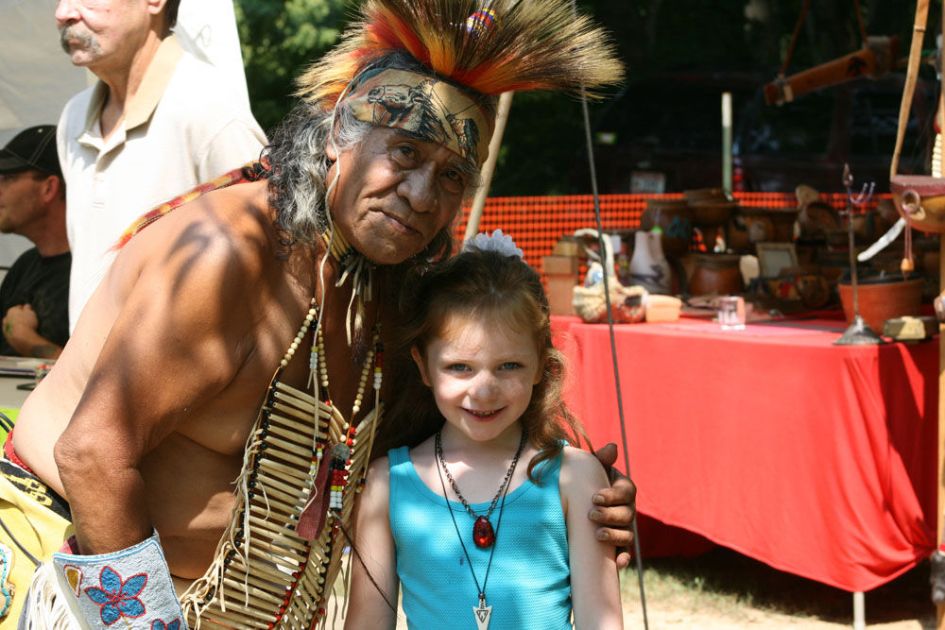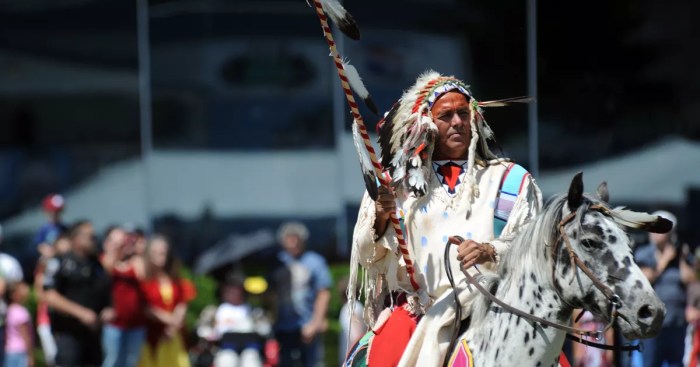The musical ancestors to today’s pow-wow repertory are a fascinating and diverse group of musical traditions that have shaped the development of this vibrant and expressive art form. From the spiritual beliefs and cultural practices of Native Americans to the social and historical context in which pow-wows have evolved, the musical roots of pow-wow music are deeply intertwined with the history and culture of Native American communities.
Pow-wow music is a unique blend of traditional and contemporary influences, reflecting the rich cultural heritage of Native Americans. It is a powerful expression of community, identity, and spirituality, and continues to evolve and innovate in the present day.
Musical Origins

Pow-wow music is a vibrant and diverse genre that has its roots in a rich tapestry of musical traditions and influences. The origins of pow-wow music can be traced back to the pre-colonial era, where Native American tribes engaged in ceremonial songs, dances, and storytelling that served both social and spiritual purposes.
Over time, these indigenous musical practices blended with elements from European and African musical traditions, giving rise to the unique and eclectic sound that characterizes pow-wow music today. The melodies and rhythms of pow-wow songs often incorporate elements of both traditional Native American music and Western popular music, creating a distinctive and recognizable sound.
Indigenous Influences
Native American spiritual beliefs and cultural practices have played a pivotal role in the evolution of pow-wow music. Storytelling, drumming, and dance are integral components of pow-wow gatherings, and the music serves as a powerful vehicle for expressing cultural identity and spirituality.
Many pow-wow songs are based on traditional stories and legends, passed down through generations. These songs often carry deep cultural significance and are used to commemorate important events or honor ancestors. Drumming and dance are also essential elements of pow-wow music, providing a rhythmic and visual accompaniment to the songs.
Historical Context
The development of pow-wow music has been shaped by a complex interplay of social, political, and economic factors. In the late 19th century, pow-wows emerged as a way for Native Americans to gather and celebrate their culture in the face of government assimilation policies.
Over the years, pow-wows have evolved into major cultural events, attracting participants and spectators from across the United States and Canada. The music has also undergone significant changes, incorporating new instruments, musical styles, and technologies.
Regional Variations
Pow-wow music exhibits a wide range of regional variations, reflecting the diverse cultural heritage of Native American tribes. Different regions have their own distinct musical styles and traditions, influenced by geographical factors, cultural exchange, and local customs.
For example, pow-wow music from the Great Plains region is characterized by its strong emphasis on drumming and chanting, while pow-wow music from the Southwest region often incorporates elements of Spanish and Mexican music.
Instrumentation and Performance
Pow-wow music is performed using a variety of traditional and contemporary instruments. The most common instruments include drums, rattles, and flutes.
Drums are the heartbeat of pow-wow music, providing a rhythmic foundation for the songs. Rattles are used to add a percussive element and are often worn by dancers. Flutes are used for solo performances and can produce a wide range of melodies.
Pow-wow singing and drumming require a high level of skill and coordination. Singers use a variety of vocal techniques, including falsetto and vibrato, to create a unique and expressive sound. Drummers play complex rhythms that interlock with the melodies of the songs.
Social and Cultural Significance
Pow-wow music plays a vital role within Native American communities, serving as a powerful force for social and cultural cohesion. Pow-wows are a time for Native Americans to come together, celebrate their heritage, and pass on their traditions to future generations.
Pow-wow music also serves as a vehicle for cultural resistance and empowerment. By performing their traditional songs and dances, Native Americans assert their cultural identity and challenge stereotypes.
Contemporary Innovations, The musical ancestors to today’s pow-wow repertory are
Pow-wow music is a living and evolving genre, constantly adapting to new influences and technologies. Contemporary pow-wow musicians are incorporating new instruments, musical styles, and technologies into their performances.
For example, some pow-wow musicians are using electronic drums and synthesizers to create new and innovative sounds. Others are experimenting with traditional songs by incorporating elements of hip-hop and rock music.
These innovations are helping to keep pow-wow music relevant and appealing to new generations of Native Americans.
User Queries: The Musical Ancestors To Today’s Pow-wow Repertory Are
What are the main musical influences on pow-wow music?
Pow-wow music draws on a variety of musical traditions, including Native American spiritual beliefs, drumming, and dance, as well as influences from European and African music.
How has pow-wow music evolved over time?
Pow-wow music has evolved over time to reflect the changing social, political, and economic factors that have affected Native American communities. It has also been influenced by the incorporation of new instruments and musical styles.
What is the significance of pow-wow music within Native American communities?
Pow-wow music is a vital part of Native American culture. It is used to foster community, preserve traditions, and promote cultural identity.

